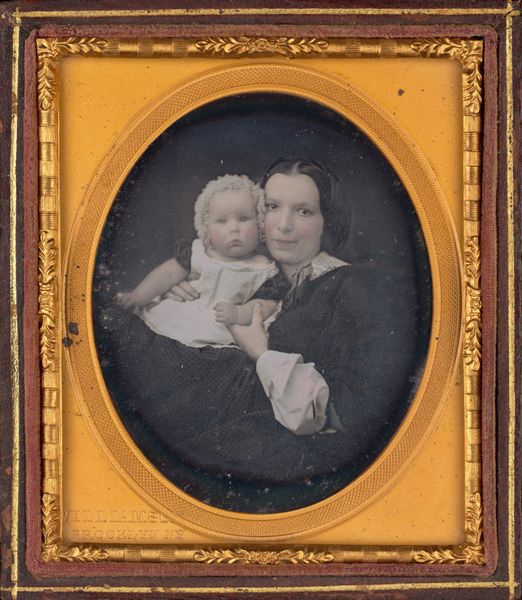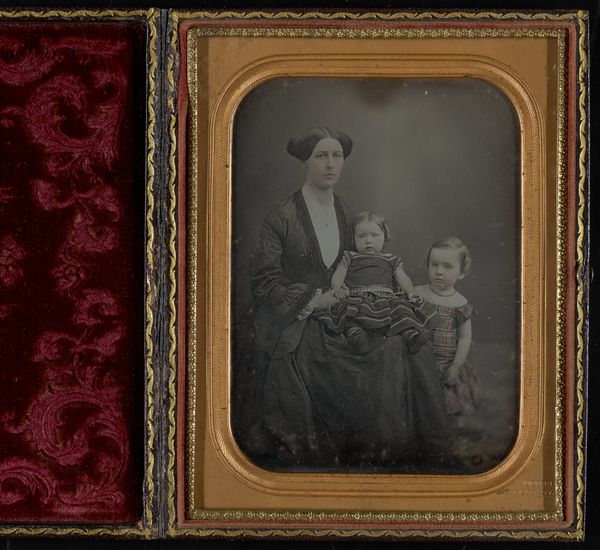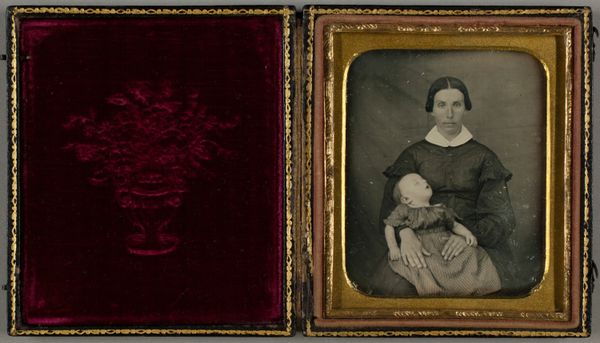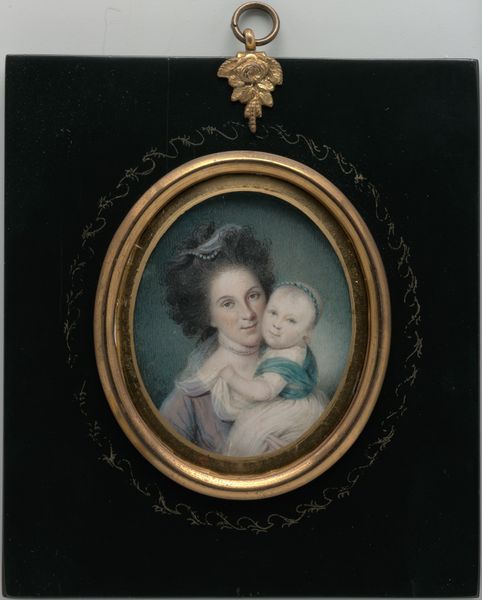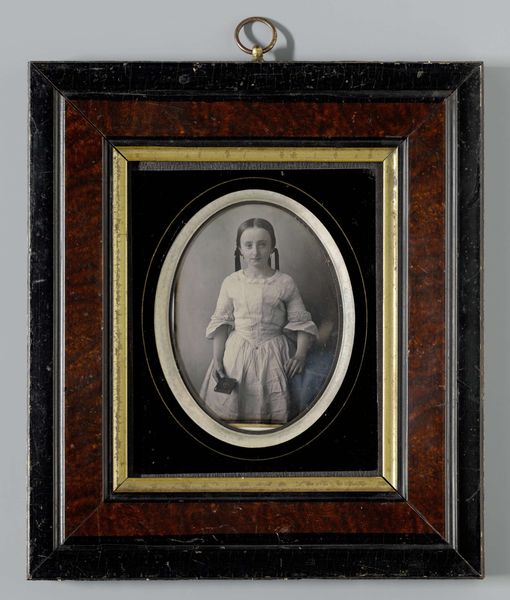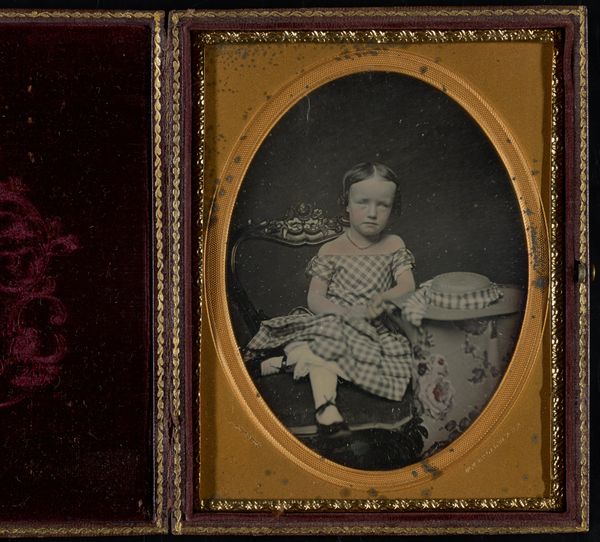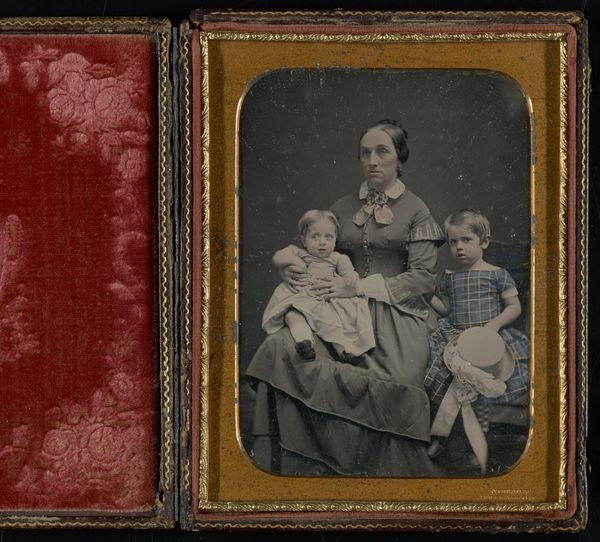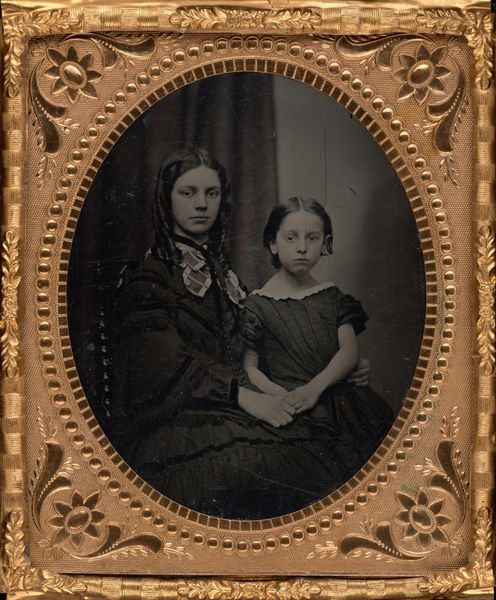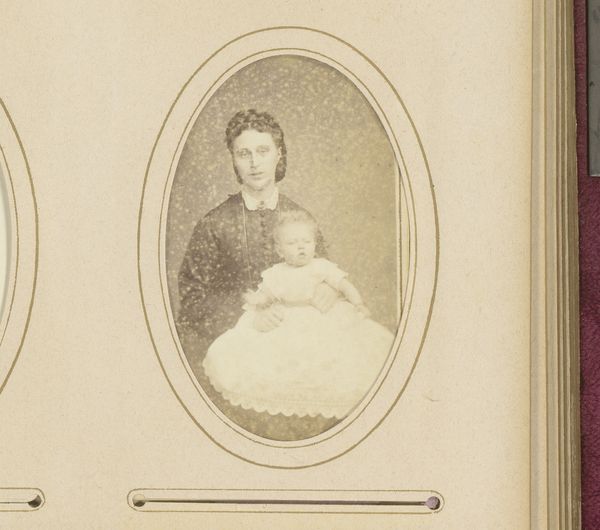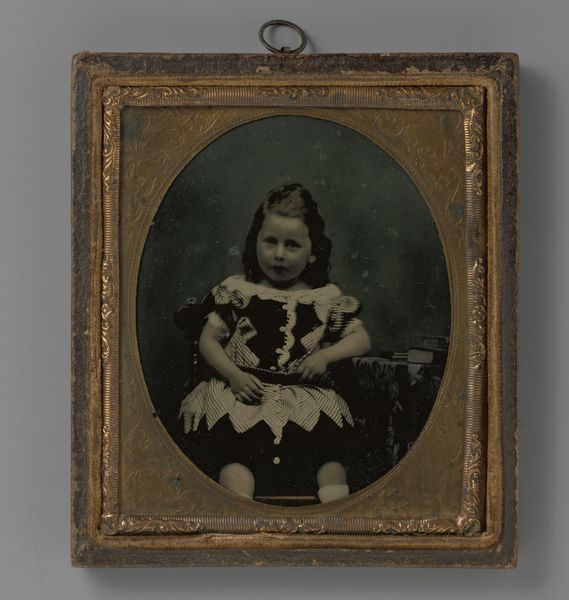
photography, albumen-print
#
portrait
#
16_19th-century
#
figuration
#
photography
#
romanticism
#
albumen-print
Dimensions: image (visible): 8.9 × 6.6 cm (3 1/2 × 2 5/8 in.) mat: 10.8 × 8.5 cm (4 1/4 × 3 3/8 in.) framed: 16.5 × 14 × 1.5 cm (6 1/2 × 5 1/2 × 9/16 in.)
Copyright: National Gallery of Art: CC0 1.0
This is a portrait of a mother and child, made by Luther Holman Hale, who was active in the mid-19th century. It's a photographic image, a daguerreotype, and its delicate surface has a mirror-like quality. Notice how the material of the image influences its appearance: the details are crisp, but the tonal range is limited. This has everything to do with the process. Daguerreotypes were made on silver-plated copper. The metal plate was polished, treated with chemicals, and then exposed in a camera. The image was then developed using mercury vapor. A very specialized, toxic process, requiring great skill. The image is presented in an ornate frame, itself a crafted object. The entire ensemble speaks to the rise of the middle class and the desire for affordable portraiture. Photography democratized image-making. It allowed more people than ever before to participate in a kind of visual self-representation that had previously been reserved for the wealthy. So, thinking about materials, making, and context helps us understand the full meaning of this artwork and the social forces that shaped its creation.
Comments
No comments
Be the first to comment and join the conversation on the ultimate creative platform.
